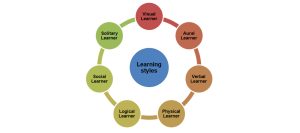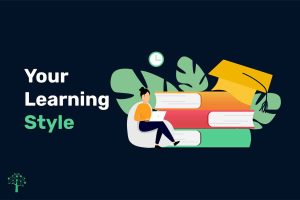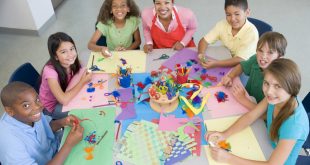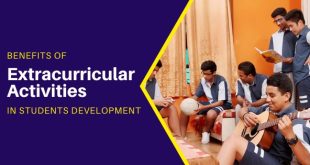In today’s diverse educational landscape, recognizing and understanding different learning styles is crucial for maximizing student engagement and effectiveness. Each individual absorbs and processes information differently, and tailoring learning approaches to these preferences can enhance comprehension and retention. This article explores various learning styles, their characteristics, and how you can determine which method works best for you or your students.
 What Are Learning Styles?
What Are Learning Styles?
Learning styles refer to the preferred ways in which individuals absorb, process, and retain information. Although numerous theories exist, many educators and psychologists categorize learning styles into four primary types: visual, auditory, reading/writing, and kinesthetic. Understanding these styles can help individuals learn more effectively and create tailored learning experiences.
1. Visual Learners
Visual learners prefer to use images, diagrams, and charts to understand information. They often think in pictures and benefit from visual aids that illustrate concepts.
Characteristics of Visual Learners:
- Strong memory for faces and places but may forget names.
- Prefer to see information presented in graphs, charts, and illustrations.
- Often doodle or sketch during lectures to help retain information.
Effective Strategies for Visual Learners:
- Use Diagrams and Charts: Incorporate visual tools like mind maps, flowcharts, and infographics to summarize information.
- Color Coding: Utilize color to highlight important information, making it easier to remember.
- Visual Aids: Integrate videos and slideshows into lessons to engage visual learners.
2. Auditory Learners
Auditory learners thrive on listening to information and often prefer verbal instructions and discussions. They process information best when it is spoken.
Characteristics of Auditory Learners:
- Enjoy listening to lectures and discussions.
- Often have a good memory for spoken information.
- May benefit from reading aloud or discussing topics with others.
Effective Strategies for Auditory Learners:
- Group Discussions: Encourage participation in group discussions or study groups to facilitate verbal interaction.
- Podcasts and Audiobooks: Utilize audio resources to reinforce learning, such as podcasts or audiobooks related to the subject matter.
- Verbal Instruction: Provide clear, verbal instructions and explanations to help reinforce concepts.
3. Reading/Writing Learners
Reading/writing learners prefer to engage with text-based materials. They often excel in environments where they can read and write to process information.
Characteristics of Reading/Writing Learners:
- Strong preference for written material, such as textbooks, articles, and essays.
- Often take extensive notes and summarize information in written form.
- Enjoy expressing thoughts through writing and may prefer written instructions.
Effective Strategies for Reading/Writing Learners:
- Extensive Reading: Provide access to a variety of written materials, including books, articles, and research papers.
- Note-Taking: Encourage thorough note-taking and the use of written summaries to reinforce learning.
- Written Assignments: Incorporate essays and written reports to engage these learners effectively.
4. Kinesthetic Learners
Kinesthetic learners, also known as tactile learners, prefer to learn through hands-on experiences. They often engage in physical activities and benefit from movement during learning.
Characteristics of Kinesthetic Learners:
- Prefer to learn by doing and may struggle with passive learning methods.
- Often excel in physical activities, such as sports or crafts.
- May have difficulty sitting still for long periods and may fidget during lessons.
Effective Strategies for Kinesthetic Learners:
- Hands-On Activities: Incorporate experiments, simulations, and role-playing into lessons to engage kinesthetic learners.
- Movement Breaks: Allow for short breaks that involve movement to help these learners stay focused.
- Real-World Applications: Use practical examples and real-world scenarios to connect learning to physical experiences.
How to Identify Your Learning Style
Understanding your learning style can significantly impact your educational experience. Here are some strategies to help you identify your preferred learning style:
1. Self-Reflection
Take time to reflect on past learning experiences. Consider the methods that worked best for you and those that didn’t. Ask yourself questions such as:
- Do I remember information better when I see it, hear it, or do it?
- How do I prefer to study?
- What techniques have helped me learn effectively in the past?
2. Learning Style Assessments
Numerous online quizzes and assessments can help you identify your learning style. These assessments typically consist of a series of questions designed to reveal your preferences. While these tools can provide insights, remember that they are not definitive and should be used as a guide.
3. Experimenting with Different Methods
Try different learning strategies to see which ones resonate with you. For example, if you primarily consider yourself a visual learner, experiment with auditory or kinesthetic methods to determine if they enhance your understanding. Engaging in various approaches can provide valuable insights into your learning preferences.
Adapting Learning Environments
Once you identify your learning style, it’s essential to adapt your learning environment to suit your preferences. Here are some tips for creating an effective learning space:
1. Visual Learners
- Organize Your Space: Use posters, charts, and visual aids around your study area to reinforce learning.
- Create a Vision Board: Develop a vision board that illustrates your goals and concepts related to your studies.
2. Auditory Learners
- Use Headphones: When studying, listen to recorded lectures or audiobooks to minimize distractions.
- Discuss Concepts: Engage in discussions with peers or study groups to reinforce learning through conversation.
3. Reading/Writing Learners
- Keep a Journal: Maintain a journal to summarize what you’ve learned and reflect on your understanding.
- Utilize Written Resources: Surround yourself with written materials that you can easily access for reference.
4. Kinesthetic Learners
- Incorporate Movement: Consider studying while standing or using a stability ball to stay active.
- Use Manipulatives: Utilize physical objects or models to explore concepts hands-on.
 Conclusion
Conclusion
Understanding different learning styles is essential for optimizing your educational experience. By recognizing whether you are a visual, auditory, reading/writing, or kinesthetic learner, you can tailor your study methods and strategies to enhance engagement and retention.
Ultimately, effective learning comes from an awareness of your preferences and a willingness to experiment with various approaches. By embracing your unique learning style, you can unlock your full potential and create a more fulfilling and effective learning journey. Whether you are a student, educator, or lifelong learner, recognizing and adapting to different learning styles will empower you to thrive in any educational setting.


